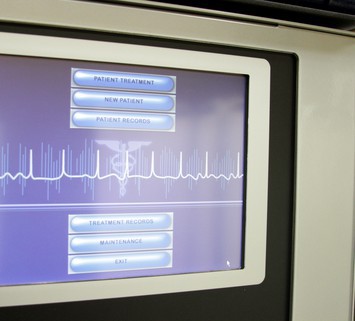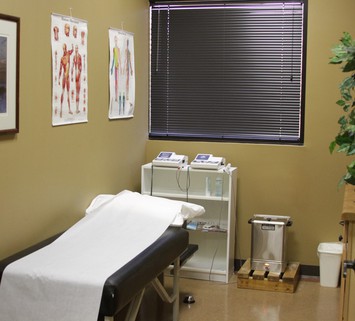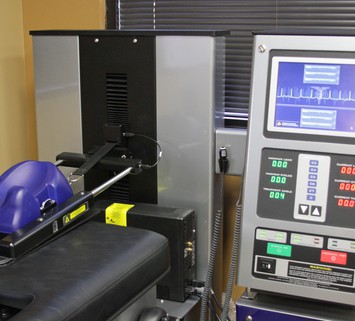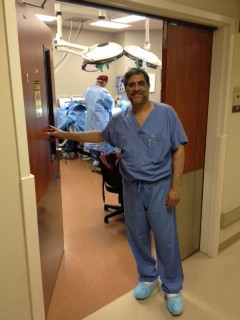As technology continues to transform healthcare, you may wonder who is a candidate for minimally invasive spine surgery. In this article, we’ll discuss the benefits of minimally invasive surgery and circumstances that align with the transformative potential of minimally invasive spine surgery, providing valuable insights for healthcare professionals and individuals navigating spinal concerns.
What is Minimally Invasive Spine Surgery?
Minimally invasive spine surgery (MISS) is a surgical approach that utilizes advanced techniques and specialized instruments to address spinal conditions with minimal disruption to surrounding tissues. In contrast to traditional spine surgery, open surgeries involving large incisions and significant muscle dissection, MISS involves smaller incisions and imaging guidance, such as fluoroscopy or endoscopy, for enhanced precision. The goal of minimally invasive spine surgery is to achieve the same therapeutic outcomes as traditional procedures while minimizing trauma to muscles and tissues.
The Benefits of Minimally Invasive Spine Surgery
Minimally invasive spine surgery (MISS) offers several benefits compared to traditional open surgery. These advantages include:
Reduced Tissue Damage
MISS involves smaller incisions, causing less disruption to muscles and surrounding tissues. This leads to decreased blood loss and a lower risk of complications.
Faster Recovery
The minimally invasive approach allows for quicker recovery times compared to traditional surgery. Patients often experience less postoperative pain and can return to their daily activities sooner.
Shorter Hospital Stay
In many cases, MISS can be performed on an outpatient basis or with a shorter hospital stay, contributing to overall cost-effectiveness and reduced risk of hospital-acquired infections.
Improved Cosmetic Outcome
The smaller incisions result in minimal scarring, providing a more aesthetically pleasing outcome compared to the larger scars associated with open surgery.
Minimally Invasive Procedures Offered at Texas Spine Center
Texas Spine Center offers a wide array of minimally invasive spinal surgery solutions to address herniated discs, spinal stenosis, degenerative disc disease (DDD), spinal cord instability, and more. Some of the minimally invasive surgical techniques that Dr. Siddiqi may recommend include:
Percutaneous Discectomy
This surgery is a minimally invasive procedure targeting herniated discs in the spine. Using a thin catheter guided by imaging removes or shrinks herniated disc material, causing nerve compression. This treatment is effective for alleviating symptoms such as pain, tingling, and numbness associated with herniated discs, offering reduced tissue trauma and quicker recovery compared to traditional open surgery.
Endoscopic Discectomy
An Endoscopic Discectomy is a minimally invasive surgical procedure used to treat herniated discs in the spine. In this minimally invasive approach, a small incision is made, and an endoscope—a thin, flexible tube with a light and camera—is inserted. The endoscope provides visual guidance, allowing the surgeon to locate and address the herniated disc material causing nerve compression. By removing or treating the problematic disc material, Endoscopic Discectomy aims to relieve symptoms such as pain and discomfort.
Microscopic Discectomy
A Microscopic Discectomy is a minimally invasive surgical procedure used to address herniated discs in the spine. A small incision is made during this procedure, and a microscope is employed to provide an enhanced view of the affected area. The surgeon uses specialized instruments guided by the microscope to remove or alleviate the herniated disc material that may be pressing on spinal nerves.
Microendoscopic Discectomy
A Microendoscopic Discectomy is a minimally invasive surgical procedure designed to address herniated discs in the spine. This technique combines elements of both microscopic and endoscopic approaches. During the procedure, a small incision is made, and a tubular retractor is inserted. A microscope provides enhanced visualization, and an endoscope is used to guide the surgeon in removing or treating the herniated disc material causing nerve compression. Combining these technologies allows for a less invasive intervention than traditional open surgery.
Spinal Fusion
Spinal fusion is a surgical procedure aimed at joining two or more vertebrae in the spine to eliminate motion between them. The procedure involves placing bone grafts or bone-like material between the affected vertebrae. Over time, these materials promote the growth of new bone, fusing the vertebrae together. Spinal fusion is often performed to stabilize the spine in cases of degenerative disc disease, spinal instability, spinal deformities, fractures, or tumors.
Percutaneous Spinal Instrumentation
Percutaneous Spinal Instrumentation is a surgical procedure that involves the insertion of screws, rods, or other instruments into the spine through small incisions in the skin. This technique is part of spinal instrumentation, which aims to provide stability to the spine by connecting and supporting the vertebrae. The term "percutaneous" indicates that the procedure is performed through the skin, minimizing the size of incisions compared to traditional open surgery.
Who is a Candidate for Minimally Invasive Spine Surgery?
Determining whether an individual is a candidate for minimally invasive spine surgery is contingent upon the unique nature of their spinal issue. A qualified neurosurgeon and spine care expert should conduct a thorough evaluation to assess a variety of factors, including the type and severity of the spine condition, the location of the problem, and the overall health of the patient in question. While conditions like herniated discs, spinal stenosis, or degenerative disc disease may be well-suited for minimally invasive approaches, the decision to pursue this type of surgery is highly individualized and up to the discretion of the treating medical professional.
Start Feeling Better with Texas Spine Center
Seeking timely and specialized care is important when dealing with any spinal issues. At Texas Spine Center, Dr. Siddiqi and his dedicated team stand at the forefront of cutting-edge medical advancements, offering state-of-the-art and individualized treatment options with minimally invasive techniques for chronic and sudden back pain. Whether you're grappling with herniated discs, spinal stenosis, or other spine conditions, their expertise ensures that you receive personalized care tailored to your unique needs.
Don't let spinal discomfort compromise your quality of life; take the first step towards relief by reaching out to Texas Spine Center. With our commitment to excellence and innovative approaches, you can trust our team to aid you in your journey toward a healthier life free of back pain. Visit our website today to schedule an appointment or learn more.



